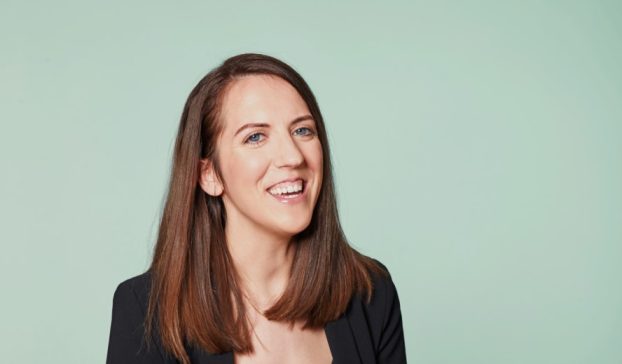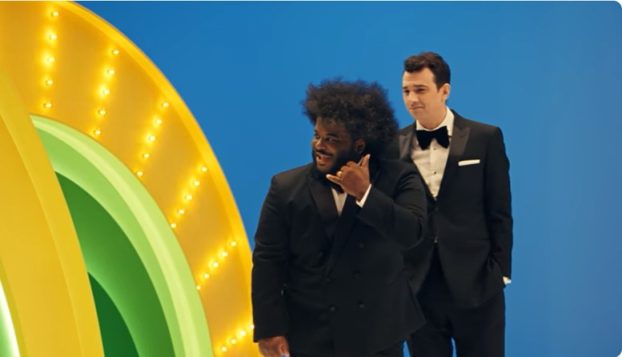Earlier this year, in a development that would have been unthinkable a few years ago, Toyota Motor Corporation topped General Motors in first-quarter sales, making it the world’s largest automaker. Though Toyota’s supremacy may not last – GM rebounded in the third quarter – it marked a major milestone for the Japanese upstart, ending seven decades of domination by the U.S. giant.
In Canada, while the rest of the auto industry is struggling, Toyota topped six years of growth with new sales records for both Toyota and Lexus in 2006. And the trend has continued through 2007: in November, Toyota Canada Inc. (TCI) announced that year-to-date sales were up 3.5%. While other manufacturers are closing factories, Toyota is building a new one in Woodstock, Ont., and it’s even considering getting into the Canadian auto insurance business.
What’s fuelling Toyota’s success is no secret, just hard to emulate. A large part of the credit goes to a corporate philosophy called the Toyota Way, which emphasizes constant improvement, intelligent research, open communication and the elimination of waste. Those principles underline the innovative worldwide Toyota Production System,which allows the automaker to produce high-quality vehicles in less time than its competitors, while creating less waste.
For Toyota, that ties in nicely with the increasing demand for more environmentally friendly vehicles. It was a pioneer in the development of fuel-efficient cars back in the ’70s, and introduced the world’s first mass-produced hybrid car, the Prius, in 1997. Since then, it has sold more than one million hybrid Toyota and Lexus (the company’s luxury brand) vehicles worldwide – and more than 16,000 in Canada since hybrids were introduced here in 2000. The emphasis on quality was rewarded at this year’s Canadian International Auto Show, when the Toyota Camry Hybrid was named 2007’s Car of the Year by the Automotive Journalists Association of Canada.
Environmental initiatives are a major part of what drives Toyota Canada president and CEO Yoichi Tomihara, who has been with Toyota since 1975, working in Japan and Germany in product planning, production management and sales and marketing before taking on his present position last February. Tomihara’s personal goal is to increase hybrid sales to 10% of TCI’s sales from the current 4% by 2010. He drives a Lexus RX hybrid himself, and is proud of his company’s involvement in the Toyota Earth Day Scholarship, which helps cover educational expenses for students who have worked for environmental causes, and the Evergreen Learning Grounds program, which bankrolls the greening of schoolyards across Canada with the help of local Toyota dealerships.
In fact, getting his dealers involved in the community and invested in the Toyota Way is another priority for Tomihara. One way to do that is the Customer One program, which logs all service visits to Toyota’s 240 Canadian dealerships and flags problems in an effort to improve the customer experience and lead to positive word of mouth and increased brand loyalty.
So it’s not surprising that TCI’s marcom work – divided between two Toronto agencies, Dentsu Canada and Saatchi & Saatchi Canada – follows the company line in a neat dovetailing of environmental virtuousness, personal connection and unabashed driving pleasure.
The agencies’ latest campaigns, for instance, are part of an effort by Toyota Canada to reach beyond its traditional reputation for reliability to appeal to consumers in a more emotional way. Dentsu’s ads for the Lexus hybrid show images of windmills, kids and trees, as well as the vehicle’s sleek lines. And its ‘Moments’ campaign for Lexus portrays ultimate life moments like surfing the perfect wave, enjoining viewers to squeeze everything they can out of them. Meanwhile, Saatchi’s Yaris work stresses the fact that the car is Euro-cool and fun to drive, while its Camry Hybrid ads tell viewers they can have it all, and its master brand effort avoids cars altogether, concentrating on trees, fish and, uh, broccoli, while countering myths about hybrid technology. The tagline that underlines the master brand effort is also the Toyota Way’s bottom line: ‘Make things better.’
‘The keystone of the philosophy is constant improvement, and that’s what the advertising needs to be as well,’ says Glen Hunt, creative catalyst at Dentsu Canada. ‘Always finding ways to evolve, never being satisfied, always going in a slightly different direction to find ways to connect with the consumer.’
The insight that growth would come through emotional connection emerged from extensive consumer research, says Warren Orton, TCI’s director of marketing.
‘Over the years we’ve reinforced quality and dependability in our marketing messages, but that only goes so far, and the campaigns had never really propelled the brand to the next level,’ he explains. ‘We needed to change that perception, and move the brand to a more emotional consideration. So in 2006 we embarked on a project to overhaul our brand. That involved a lot of research, which helped us set a direction. We distilled a dozen different areas down to about four, and the one that resonated best was ‘Make things better.’ And that became the centrepiece of all our brand activity. It’s the perfect positioning for us, internally as well as externally.’
”Make things better’ came out of our recommendation to create almost a gold standard of what the brand needs to stand for,’ says Brett Channer, chairman and EVP/CD at Saatchi Canada. ‘Corporate behaviour is as important today as product behaviour. So we did research to find an insight that would link an emotional attribute of Toyota’s brand image to Canadian citizens, and the one we found was that we both live for making tomorrow better.
‘In our research, Toyota got high scores on quality, reliability and durability, so the way to improve was to look at the attributes we were not getting scored on, and those were emotionally based,’ he adds. ‘On the list of attributes that matter, we wanted to get ‘good corporate citizenship,’ ‘fun to drive,’ ‘high design,’ ‘innovation’ and ‘creativity.’ And that will come from both the master brand and the new way we communicate the product that we sell.’
‘Moments’ has certainly been successful as an emotion-based effort; Dentsu says Lexus sales have increased more than 400% since it began working on the brand. ‘It’s been a phenomenal response,’ says Hunt. ‘A lot of it has to do with a phenomenal product, and a great sales force. But they really focused on a new philosophy, to create a moment of theatre with everything inside the vehicle.
So when you sit in the car, that should create a moment for you, and when you start it with the pushbutton, that should be a moment
of theatre. Everything is about developing these moments.’
‘The campaign has been very successful,’ allows Orton, ‘but the real guts of what has made Lexus so successful is how well customer satisfaction has been maintained, which leads to word of mouth. Our dealers do a tremendous job of taking care of our guests in the Lexus dealerships and supplying a superior ownership experience, and that really is the hallmark of Lexus and the foundation we’ve built our marketing on.’
While the various brands are connected by a common philosophy, Toyota gives each model a distinct personality that’s reflected in its marketing message. Lexus stands for luxury, for instance, while the Camry is a practical family car, Tundra is a tough truck and Yaris is young and fun.
‘It’s important to create distinct marketing voices for each of the models, because Toyota needs to be known for a wider selection of choices than it has historically been known for, which is basically Camry and Corolla,’ explains Channer. ‘It was designed so that each product would have its own unique target group.’
‘Each model appeals to a different segment of the market in terms of age demographic and affordability,’ adds Orton. ‘It’s important that we appeal to people in various stages of their life and help them make a decision on which vehicles they need at that time.’
The Yaris campaign, for example, has determinedly gone after the young male demographic with its eccentric Uncle Yaris character. ‘We asked people what makes them feel good in their lives, and one insight was that uncles make people feel good,’ says Channer. ‘Everyone has a favourite uncle story. So we looked for a way to link that attribute to the values we want to support this car on, and it just came together.
‘It’s not as wacky as it seems, because it’s directly related to research and consumer insight management,’ he adds. ‘Nothing’s ever just a whim; it’s all based on numerical structuring. And it’s been hugely successful.’
‘Toyota really focuses on what an individual needs, rather than seeing everyone as a pocketbook and selling them anything,’ adds Hunt. ‘One example is the Tundra truck. Toyota sent engineers to wrecking yards to look at other vehicles and find out how they broke down and what the issues were. And they found a bunch of headrests piled in a corner. It turned out that when cowboys and construction workers got into their trucks, the headrests would bump up against their hats, so they’d just rip them out and throw them away. The engineers saw this and said, ‘This is an issue. How can we make this better?’ And so they made a headrest that tilts back so you can wear your hat or helmet. That’s just an example of a million things they’re doing to understand the consumer and improve their experience.’
With all this in mind, strategy sat down with Yoichi Tomihara at Toyota’s head office in Scarborough, Ont., to get his perspective on the challenges facing Toyota and the way he’s implementing the Toyota Way in the Canadian market.
How well has the Toyota Way translated into Canada, and how does it tie in with environmental initiatives?
The core value of the Toyota Way is kaizen, which is a Japanese word that means ‘make things better.’ And ‘make things better’ is a match with Canadian values. Most of the Canadian people are very optimistic, but they want to improve. They want a better life, a better environment, a better society. This makes this Toyota culture a match for Canada and our company. Through our dealerships we are also interested in improvement, especially in the area of environmental issues.
You have said it’s your personal task to sell more hybrids. How will you accomplish that goal?
Hybrid technology is our dream. Toyota has spent a huge amount of manpower and investment to establish this new technology. Ten years ago, we launched the first hybrid vehicle – a dream car, with both an electric and a gasoline motor. All Toyota associates have been very excited by it, not just for the business purpose, but because our vehicles are contributing to the environmental issue. Our dream is to spread hybrid technology all over the world, and already we have sold one million hybrid vehicles.
It was a new technology, so at the beginning it was extremely difficult to convince the public to test drive or buy these vehicles. But we have enhanced our PR activities, especially around the technology. I came from a previous assignment in Germany, and in Europe they all believe that European technology is the best in the world. So we had to convince governments and NGOs and media there why hybrid technology is so effective at reducing emissions. This has worked, and now most of the European governments and NGOs have been supporting hybrid technology. So we’re taking a similar approach in Canada.
How did Toyota manage to develop hybrids before other manufacturers did?
In 1990 our company decided that the most important subject in the coming 50 to 100 years was the environment. So we decided that a major investment should be spent on environmental technology. It’s not necessarily just the hybrid, but also fuel cells, new diesel, biofuel…it’s a cumulation of investment from the 1990s. So we had a five- or 10-year advantage over other manufacturers.
Are you planning to introduce more hybrid models in the future?
Yes. Our dream is to hybridize all our Toyota vehicles. Of course we have to make this happen step by step, because each hybridization requires a lot of tasks and investments. We can’t do it in one day.
In the meantime, you’re also increasing your eco-efforts beyond the corporate level. How important was it to get independent dealers involved in your community and environmental activities?
Very important. We have asked our dealers to be involved, especially in the Evergreen activities. Each local school has the connections, the contacts, so through these activities dealers are more motivated and connected. And the dealership is like our ambassador in each local area, so we want to further involve our dealers in this area.
How important is the role of the dealer network in increasing brand loyalty?
Brand loyalty comes through our dealers, because it’s about customer satisfaction. Our dealerships have not been pure sales machines; they are more like individual customer treatment centres. This was established to serve our local activities. Of course, behind the quality of the product is a fundamental need to gain trust from customers.
Why did you decide to appeal to consumers’ emotional rather than rational needs in your marketing efforts?
This is a very important subject. In the past, Toyota vehicles were sold by their reputation for quality, and other rational reasons. But we know now that we have to explain more to the public, the government and the media what we are about. Evergreen, the Earth Day scholarship, the Special Olympics – these activities are important. But most important is Toyota’s investment in Canada. We are now building a second big factory in Ontario. Other manufacturers cannot make this investment. This is a long-term commitment to Canada from Toyota, meaning investment and hiring and new relationships with local suppliers. So we’re creating more story behind the product, and we try to emotionalize the brand further.
Does Toyota’s policy of moving its managers around the world mean its agency partners play a bigger role in marketing efforts?
Yes. The requirements from each market are different, and each local agency has the best knowledge and experience for each local market. Toyota has the global knowledge and the global experiences, but for implementation we rely on local agencies.
Why is there an emphasis on keeping the brands distinct and separate?
The brand personalities are very important. Toyota has been very successful with baby boomers in the past, and we want to also retain good customer numbers with the new Generations X and Y, so we have to really specialize our brand lineup to meet the demand from the individual generations.
Do you plan to appeal to the Canadian youth market by introducing the Scion?
At this moment we have Yaris and Matrix, which are well accepted by the young generation. We are not hastening to introduce the Scion, but we are studying the best timing to introduce it eventually. We are confident in Yaris and Matrix, they’ve been appealing to younger customers, and through better marketing we can capture more of the younger generation.
Why is Toyota taking steps to enter the insurance business in Canada? Is it a marketing tool or a separate revenue generator?
It’s relating to customer satisfaction. In the rest of the world, this was well accepted, because superior quality is a Toyota standard. But it’s not a subject we can really decide on right now. Because of the challenges represented by local regulations in Canada and other parties working in this area, this is still under study. Like the Scion, we are in the study stage.
What has been your biggest challenge in leading Toyota Canada?
At this moment, it’s to make things better – how to make it happen, how to implement it everywhere. This I know is a very difficult subject, in the company culture and the dealership culture, or even the perception from the public. It’s a beautiful slogan, but implementing it is the biggest challenge.
What innovation are you most proud of in your time at Toyota?
It’s not necessarily that I’m proud, but my strongest belief is in rich communication among all stakeholders. The reason why Toyota has been growing everywhere in the world is this very strong, rich communication. We are especially proud of our relationships with our local dealerships, distributors and manufacturers. I think this relationship has been number one in the industry, or maybe even in the business world, and this is thanks to very good communication. So this is kind of the basis of ‘make things better.’
Your predecessor, Ken Tomikawa, said that the pioneering of the Customer One project was the highlight of his tenure at Toyota Canada. Is that a high priority for you as well?
Customer One is a program to create the best customer satisfaction. And for me, the ultimate target is to create the best customer satisfaction in Canada. There are surveys showing that Toyota has one of the top global customer satisfaction rankings in the car industry, but still we are not number one here. So I really want to firmly establish us as the outstanding customer satisfaction brand, number one in Canada. We can’t do it alone, so we ask for help from our external agencies and more involvement from the dealerships. It’s not easy, but it’s a goal for Toyota.
Unpaving the schoolyards
One of the projects Toyota Canada Inc. (TCI) CEO Yoichi Tomihara is most proud of is the Toyota Learning Grounds program, which brings teachers, students and community members together
in an effort to transform paved schoolyards into outdoor learning environments. Schools get hands-on help in planting trees, shrubs and vegetable gardens, as well as training for teachers and print, video and online resources for students. Tomihara himself gave a speech and helped plant a tree earlier this year at an Evergreen event at Woburn Public School in Scarborough.
The Learning Grounds program was founded in 1993 as an initiative of Evergreen, a national non-profit environmental group. Toyota’s sponsorship, which began in 2000, has resulted in an expansion of its reach to include more schools as well as an annual newsletter, regional workshops, a website (Evergreen.ca) and toll-free access to staff. Toyota dealers not only contribute financially, but also pitch in with spadework or presenting cheques, which reinforces their community involvement.
‘The dealers have an interest in connecting with their community and showing the way they’re giving back,’ says Cam Collyer, director of the Toyota Learning Grounds program. ‘It’s a lovely aspect for the program, and I think it works for Toyota as well. It gives the dealers a different face in their community.’
TCI and its dealerships have contributed more than $4 million to the program, involving 265,000 schoolchildren at 600 schools across Canada. It also features the program on its website and in print efforts including the master brand ‘Broccoli’ ad.
‘Toyota’s involvement has meant a stable and strong national presence, which has allowed us to do things that are difficult to do with project-based funding,’ says Collyer. ‘This program is about a lot more than distributing grants to schools. We are creating a foundation for public education that will last a long time.’























